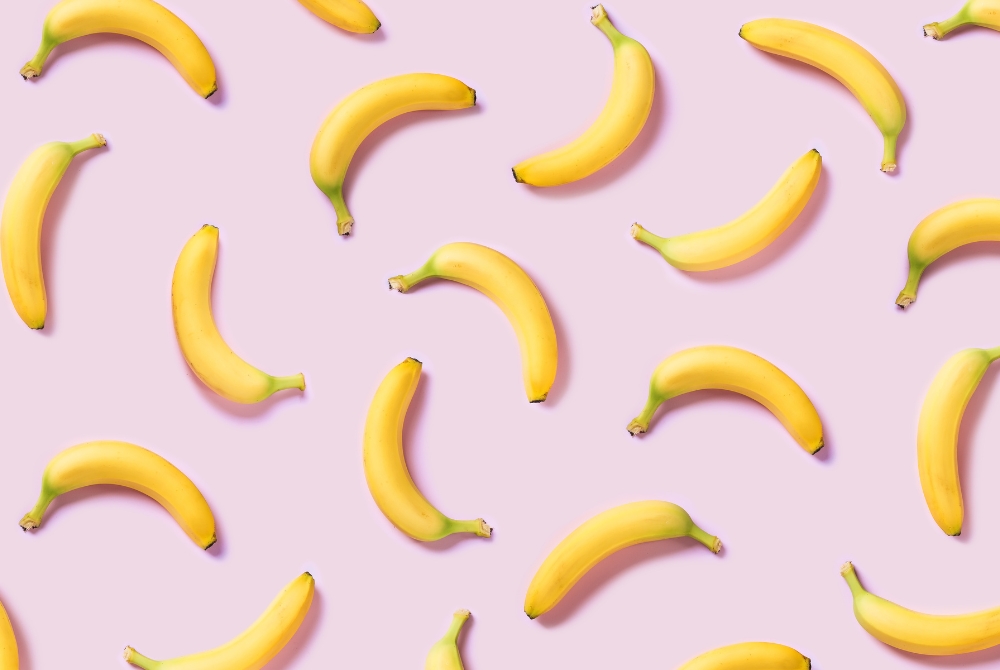Sometimes, thankfully, intellectual property law proves to be downright comical. The case we examine this week taps the funny bone and reads like the setup of a joke: How many artists does it take to duct tape a banana to a wall? To be more specific, how many artists can tape a banana to a wall while avoiding copyright litigation?
A Banana Split
Italian artist Maurizio Cattelan certainly did not expect his banana-on-wall piece to garner the copyright ire of California artist Joe Morford. Cattelan’s Comedian was on display at Art Basel Miami in December 2019. It consisted of a real, edible banana duct taped directly to the gallery wall.
Avant garde, no?
Except that in 2001, Morford created his Banana and Orange using a plastic banana and plastic orange duct taped to vertically stacked green panels which were mounted on a wall. Morford’s piece appears on his blog and has been featured on YouTube in some capacity since 2001 – although Morford only registered a copyright for the work in 2020.
Perhaps Morford felt stung when several copies and proofs of Cattelan’s piece went viral and sold, totaling upwards of $390,000. What we do know is that Morford sued Cattelan for copyright infringement in 2021.
Fruit At Odds
The copyright litigation case has gone back and forth several times. At first, Cattelan asked for it to be dismissed. He denied even knowing about Morford’s earlier work. Still, a judge rejected his motion to dismiss in favor of examining the substantial similarities between the art pieces.
In this kind of situation, comparing two creative works and determining the presence or absence of infringement, a court looks at two pivotal elements:
- For the artist claiming infringement, is their copyright valid?
- Does one work copy the original elements of the other work?
These questions might sound simple, but they took 12 pages of analysis in the final judge’s opinion. The judge used the abstraction-filtration-comparison test to weigh how closely the bananas measured up.
To give a synopsis of the logic there:
Abstraction. In this segment, the judge separates the abstract idea of a piece from its specific expression. In this case, they describe the physical details of the pieces, which show how each artist chose to manifest their fruit art. These are the elements that will be examined for copyright protection and infringement claims.
Filtration. Filtration continues to affirm what is copyrightable – protection only applies to the expressive elements of a work. The other elements – practical, conceptual, procedural – will be “filtered out” of the protection game. For example, you can copyright a written screenplay. You cannot copyright the three-act structure or a type of character who might show up in other screenplays about similar topics (i.e. “Peacemaker Bartender”). In this case, Morford was not afforded copyright protection for bananas, duct tape, or the idea of sticking a banana to a wall with tape.
Cattelan defended his work using the merger doctrine, which asserts that some ideas are so practical as to merge with their expression – in other words, if your idea is “banana taped to a wall,” there are not too many varied concrete ways to express that. In this case – unfortunately for Morford – that did win out. The largest expressive elements of his case, the banana taped to a wall, was filtered out when the judge agreed with the merger doctrine perspective.
Comparison. This step is the final evaluation in copyright litigation after the unprotected parts of the work have been “filtered out.” The comparison does attach different weights to different factors as the court discerns:
- Did the allegedly infringing work copy expressive components of the original work that are protected by copyright?
- What percentage of the original work was copied?
- How important are those expressive components to the work overall?
For those curious about how this case shakes out, here is the comparison table that the court created:

As you can see, when the court focused on the details (and when the major factor of the banana was filtered) – there were not many strongly overlapping elements at all.
A Word On Access
Another strong factor against Morford was Cattelan’s access to Banana and Orange. Morford claimed that Cattelan could have come across his piece and drawn inspiration from it, because it was available on the internet. Cattelan denied drawing on Morford’s work and outlined his process, which did not include searching for other banana-fueled artwork on the internet. The court agreed with him.
This could have really opened a copyright litigation can of worms if the court had sided with Morford. Any artist with a website could claim that other artists with similar work could have reasonably crossed paths with their work and copied it.
“Reasonable” is the key word here. The court asserted that Morford needed to show more connections between his path and Cattelan’s – for instance, if Cattelan had been taking art gallery tours in California in 2001. That would be more a reasonable scenario than simply the ocean of the internet – something which, frankly, connects almost every human being at this point in time.
Apples to Apples, Bananas to Oranges
Although this case provided plenty of entertainment to spectators, I imagine that Morford is not laughing at his denial. If there is any IP lesson to be learned from this story, it is to register your copyrights early and to broadcast your ownership of pieces loudly.
